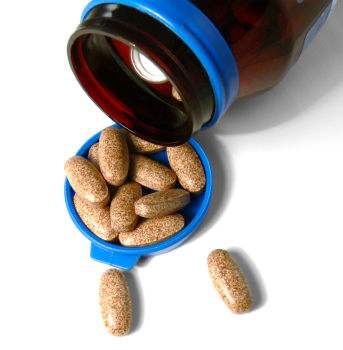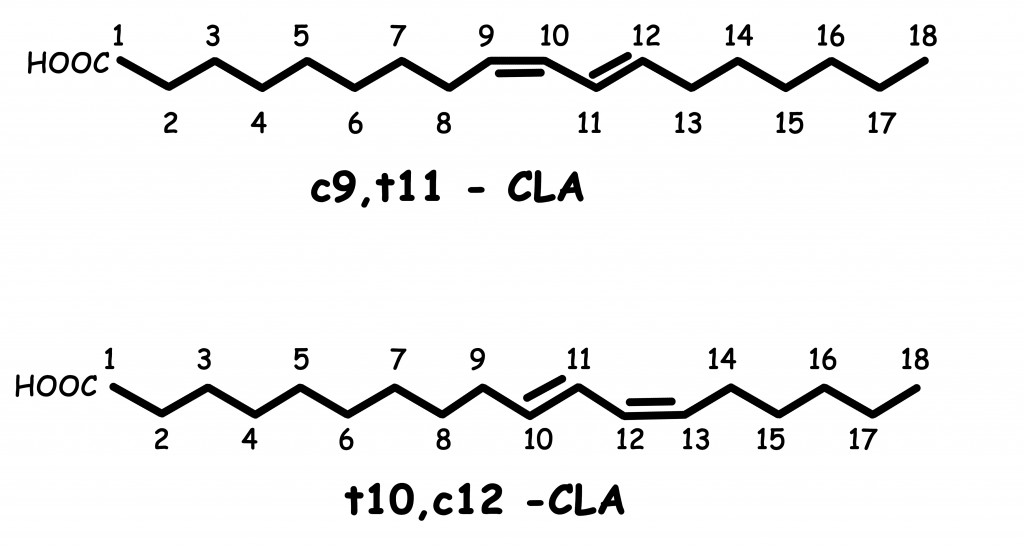Pretty much everybody is looking for a pill to lose weight.
Some pills might work, but I’m going to share a secret: My source in the pharmaceutical industry tells me that in recent years the FDA has added a new requirement to weight loss studies that has caused some problems with drug development.
What do you think the new requirement would be? Increase safety standards? Nope. Longer interventions? Nope.
The new requirement is that any new weight loss drug will have to be compared to a diet and exercise control (minimum intervention). Before, any drug was compared to a control group that got a placebo drug – no diet, no exercise. Thus any findings showed the effect of the drug compared to nothing.
Since then, they have found drugs that help people lose weight… but the new control group loses way more.
Shocker – diet and exercise helps you lose weight, better than drugs.
What to do if you hit a weight loss plateau?
What happens if you are dieting and exercising and have plateaued?
Unless you’re one of those weight-loss-commercial droids, you’re probably not going to run off to your doctor to get a prescription. So what can you do?
There are some supplements that look promising. One in particular is CLA.

What is CLA?
CLA stands for conjugated linoleic acids.
Well, uh, that’s explanatory… not.
Okay, I’ll try to clear things up: CLAs are a family of fatty acids that are different biochemical arrangements of lineolic acid. Unlike other fatty acids, they have a cis double bond and a trans double bond.
Yes, CLAs are trans fats. (That’s one reason not to have a blanket ban on all trans fats.)
CLAs are naturally occurring trans fats that are produced during the digestion of unsaturated fats in cows and sheep. For more about trans fat, see “All About Bad Fats“.
Different CLAs are named based on where these cis and trans bonds happen along an 18 carbon chain (see figure 1 below).
If you have, for example, c9,t11-CLA, then the cis double bond (shown as a double line below) is at the 13th carbon and the trans double bond is at the 11th carbon. With t10,c12-CLA the trans double bond is at the 10th carbon and the cis at the 12th.

Research question
Why should you care about these different versions of CLA? Well, it seems that different versions are better at helping you lose body fat than others.
In this review I look at a research article that compares c9,t11-CLA to a mix of c9,t11-CLA and t10,c12-CLA for body fat loss.
Raff M, Tholstrup T, Toubro S, Bruun JM, Lund P, Straarup EM, Christensen R, Sandberg MB, Mandrup S. Conjugated linoleic acids reduce body fat in healthy postmenopausal women. J Nutr. 2009 Jul;139(7):1347-52. Epub 2009 Jun 3.
Methods
This study was a part of a bigger study, though it looks like this is the first publication from that study. (Yes, sometimes one study ends up being a more than one published article. Hey, if you’ve got all that grant money, make sure you squeeze out every penny!)
There were 81 postmenopausal women with a BMI of less than 35, no hypertension, no chronic disease, no regular mediation and over a year since last menstruation.
There was no selection for physical activity, but since this study was done in Denmark I have to tell you from other studies that the average Dane is in pretty damn good shape compared to the rest of the world.
Actually, all the Scandinavian countries seem to have a more active “untrained” population. So “untrained” there is different than “untrained” everywhere else.
To make sure there were no differences in diet, everybody in the study had to fill out a 3-day diet journal, recording everything they ate over those three days.
Olive oil versus CLA
There were three groups in this study to compare the effect of CLA on body composition and blood fats. The groups were:
- Olive oil – This was used as a control since it is considered neutral or slightly beneficial to blood lipids. Dosage was 5.5 g/day (4.2 g of oleic acid 18:1(n-9)).
- CLA mix – Dosage was 5.5 g/day, made up of 2.3 g of CLA c9,t11 + 2.2 g CLA t10,c12-CLA (about 40% of each).
- C9,t11-CLA – This is the CLA isoform found in cow’s milk. Dosage was 5.5 g test fat/day or 4.7 g of c9,t11-CLA.
The participants took 6 capsules/day of either olive oil, CLA mix or c9,t11-CLA but they didn’t know which one they were taking.
To make sure everybody was taking their capsules, the scientists were a little sneaky. They gave the participants extra capsules for the month (a random amount only known to the scientists) and counted them at the end of the month to see how many were left. If too many were left, the scientists knew the participant forgot to take x number of capsules.
Supplementation was done for 16 weeks.
Body weight & composition
Researchers figured out how much body fat everybody had before and after the study using dual energy X-ray absorptiometry (DEXA).
DEXA is considered the gold standard for body composition, since you can get an image of the entire body instead of sampling (like with calipers) and you don’t have to worry about getting inaccurate readings because of excess gases (like with hydrostatic weighing), but there are drawbacks: it’s expensive and often hard to access the equipment.
Blood and adipose tissue
Before and after the olive oil or CLA supplementation, the participants had their blood taken and adipose tissue biopsies done.
A biopsy is not a very nice procedure. Researchers used a 16 or 17 gauge needle to take an adipose tissue biopsy from the upper outer quadrant of the buttock – that’s right, they took a fat sample from the butt cheek.
Why bother with the blood and fat? Well, first, to know if the participants were taking their supplements; second, to see what other hormones changed.
If the participants were taking their supplements as prescribed, there would be an increase in certain fats. If you take in more c9,t11 CLA, lo and behold you get more c9,t11 CLA in your blood plasma. Same thing to a certain degree with fat, but fat usually takes longer for changes to come up in analysis.
Instead of watching the participants take their supplements, the scientists just checked their blood – if there was no change in blood fatty acids, then the participant wasn’t compliant.
The other reason for the blood sampling was to see if the supplements changed insulin or glucose levels, which would mean better or worse sugar regulation. If there were improvements in insulin or glucose levels, then supplementation could help with diabetes.
Adipogenic gene expression
Fat sampling was also done to figure out whether supplementation would change adipogenic gene expression. Yeah for jargon!
Adipogenic gene expression means fat gene production – how much of the genes responsible for making fat are being made. This can be confusing – it isn’t what genes you have, but how much RNA and subsequently protein you’re making from the genes.
Let me explain. Genes are the design plans, the same way a factory has design plans for a product.
You have different genes to build different proteins, but having the gene doesn’t mean your cells are making anything. Just because you have design plans for making a car doesn’t mean you are actually producing a car. And just as a car factory decides to make more or fewer blue sedans, your cells decide to make more or fewer glucose transporters (GLUT4).
Genetically speaking, scientists can look at a few things:
1. Genes – what versions do you have compared to the rest of the world? If you have blue eyes you have at least one gene that is different than somebody with brown eyes.
2. Gene expression – are you making the gene product?
For example, almost everybody makes a certain amount of melanin (the stuff that pigments your skin). If you’re particularly pale you aren’t making very much, but you still have the gene for melanin. If you go to some place warm and sunny and start tanning then you start making more melanin (increasing melanin gene expression) and voila, you get darker.
So with genes you either have them or you don’t, but gene expression is variable. Sometimes you make a lot of a gene product and sometimes you make none of the gene product.
Results
After 16 weeks, as expected, the CLA-mix group had higher c9,t11-CLA and t10,C11-CLA levels in their blood (compared to olive oil group – control) and the c9,t11-CLA group had higher c9,t11-CLA levels in their blood (compared to olive oil group).
So, the participants who finished the study (75 in total) took their supplements and the supplements increased the expected fatty acid in the blood.
Body composition and CLA supplementation
Did CLA supplementation matter to body weight and body composition? Yes and no.
It depended on which type of CLA the participants were taking.
One group had improvement in body composition, but the other didn’t – any guesses to which type of CLA worked, mixed or pure (c9,t11-CLA)?
Well, the mixed CLA group had the differences.
Even though there was no differences in body weight there were differences in total fat, lower-body fat and even lower-body lean body mass. The mixed CLA-group had less total fat (4%), less lower-body fat (7%) and more lower-body lean body mass (3%) compared to the control and even the c9,t11-CLA group.
By the way, that’s 7% less compared to the other group — not 7% less body fat as an overall percentage. Now THAT would be an impressive result.
Nevertheless, score one for mixed CLA.
Diabetic markers and CLA supplementation
Even though there were differences in body composition with mixed-CLA supplementation there was no difference in diabetic markers – insulin and glucose.
Adipogenic genes
Since there was a decrease in fat it would make sense that you would find the fat making (adipogenic) genes less active – in other words, lower gene expression.
And that is indeed what the scientists found in this study – the mixed-CLA group had less expression (looking at mRNA) of GLUT4 (a protein that transports glucose into the cell) and LPL (lipoprotein lipase – breaks down fat).
Conclusion
CLA supplementation does decrease body fat, but only if it’s a specific mixture of CLAs.
In this study, the mixed-CLA group (a mix of 40% c9,t11-CLA and 40% t10,c12-CLA) did decrease body fat, but c9,t11 CLA supplementation didn’t.
If you were going to supplement, a mix of c9,t11-CLA and t10,c12-CLA is the way to go, but you aren’t going to see any miracles.
Let’s put things into perspective: While the mixed CLA group did have 7% less lower-body fat than the control group, that works out to be 700 grams (1.5 lb) of fat on average.
Bottom line
If you have everything else in order – exercising, being PN compliant, sleeping, etc. – and are not losing any more body fat then you could give mixed CLA supplementation a try. Without everything else in place, I think you’d be wasting your money.
Or you could just move to Denmark. Goddag!

Learn more
Want to get in the best shape of your life, and stay that way for good? Check out the following 5-day body transformation courses.
The best part? They're totally free.
To check out the free courses, just click one of the links below.




Share